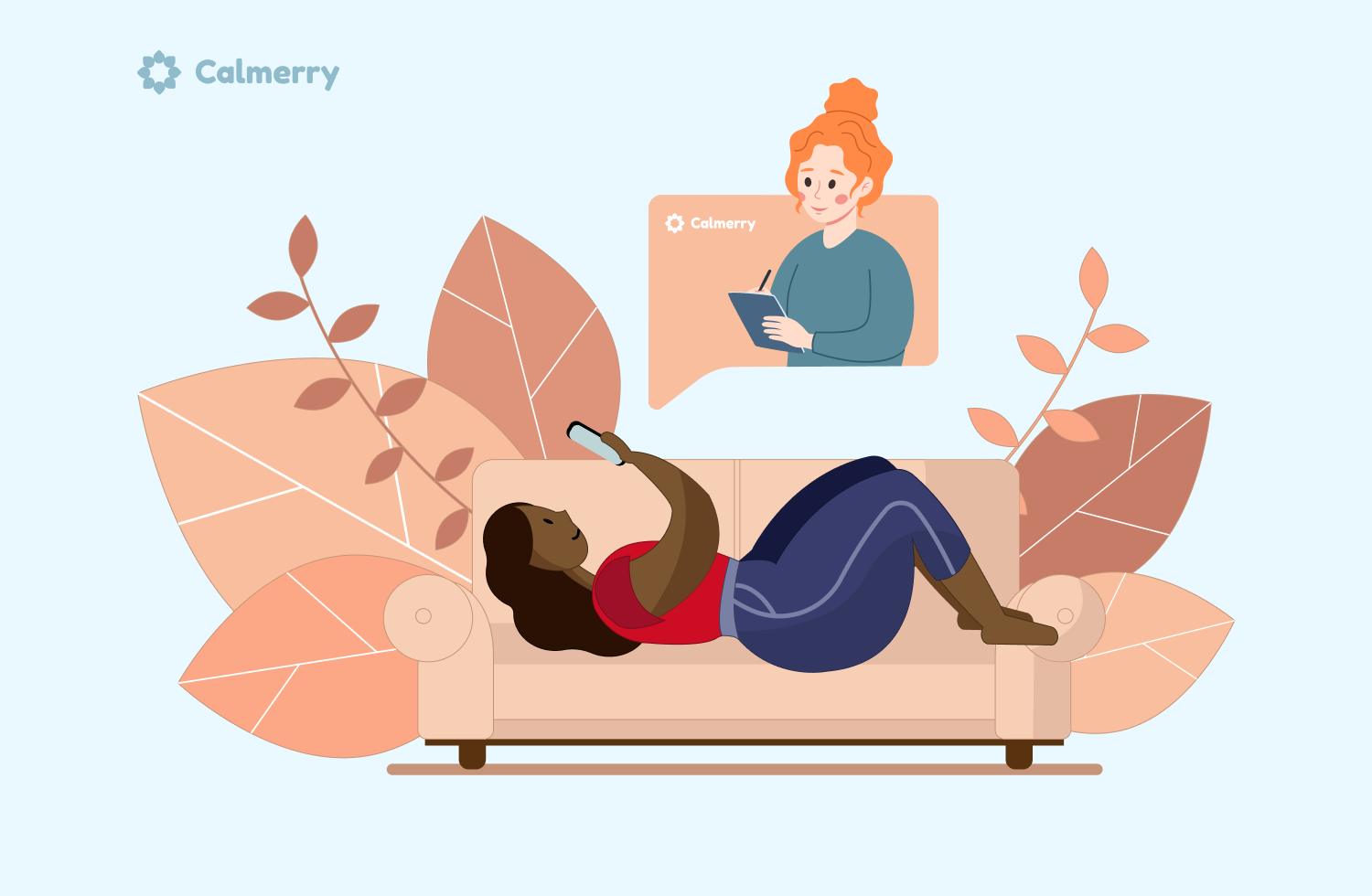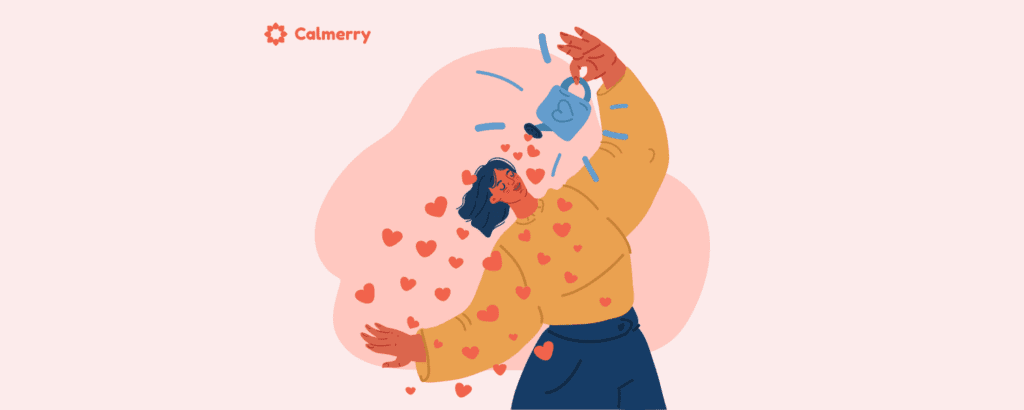How to Overcome Body Shaming
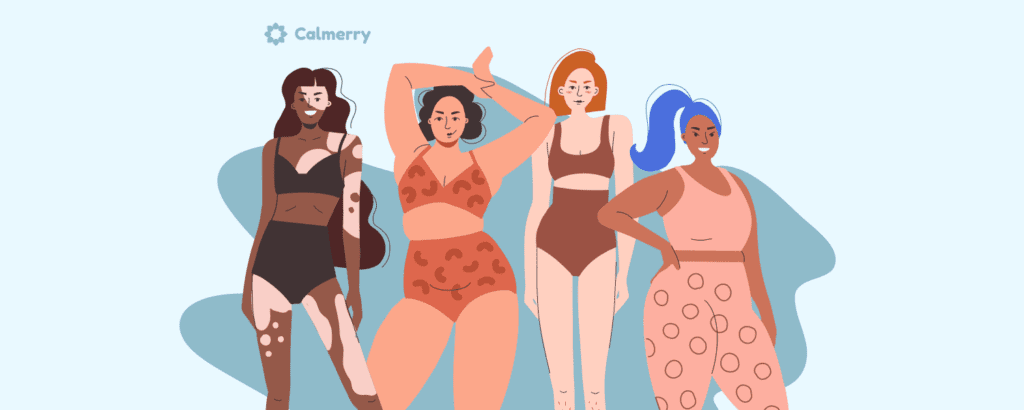
In this article
The year 2021, Times Square – the epicenter of one of the most diverse cities on earth. A giant billboard is up featuring two women of different sizes – the larger woman with her head in her hands looking miserable, and the thinner woman with a big smile looking very happy. The text across the billboard says, “Feeling fat and lazy?”
Body shaming is real, and there’s no escape from it. Even Olympic-level athletes, superstars like Selena Gomez, and Cambridge classics professors are body shamed. It’s everywhere.
These days, it’s relatively normal to feel unsatisfied with how we look – our nose is crooked, we have a muffin top, our hair is frizzy, our pores are large, we have wrinkles around our eyes when we smile, our thighs have cellulite, etc.
There’s nothing inherently wrong with any of those things, in fact, they’re real and beautiful parts of the human experience. Yet, we’re incredibly self-critical.
Part of this stems from our exposure to narrow and unattainable standards of beauty from a young age. Some people with serious emotional disturbances, a lack of empathy and healthy boundaries, or unprocessed personal pain, may also criticize other people’s appearance. It happens so often that we might not even recognize it as body shaming.
In order to overcome the negative impacts of body shaming, the first step is to understand what it is and know how to identify it.
What is body shaming?
Body shaming occurs when a person expresses humiliation, degradation, or shame about their own or another person’s body shape or size. It can happen in person or online, and it’s done by parents, siblings, friends, peers, strangers, ourselves, and the diet culture at large.
It’s often so ingrained in people’s everyday communication, they don’t even realize that it’s happening: you’re told you shouldn’t wear something because of your body type, you compare yourself to someone else’s appearance, you hear criticisms about how another person looks or make derogatory jokes based on your weight.
Body shaming can occur with any person, no matter how they look: too large, too slim, too dark, too pale, too curvy, too flat, too short, too hairy, too old, not enough hair, etc. It can also include criticism of facial features, certain body parts, or even physical marks.
While all of this constitutes body shaming, mass culture currently places an enormous value on thinness and youth (remember the heroin chic of the 90s and thigh gaps or being paper-thin in the 2010s?) and perpetuates a uniquely harmful expression of fatphobia. This includes weight stigma from medical providers and stress that precipitates chronic physical illnesses.
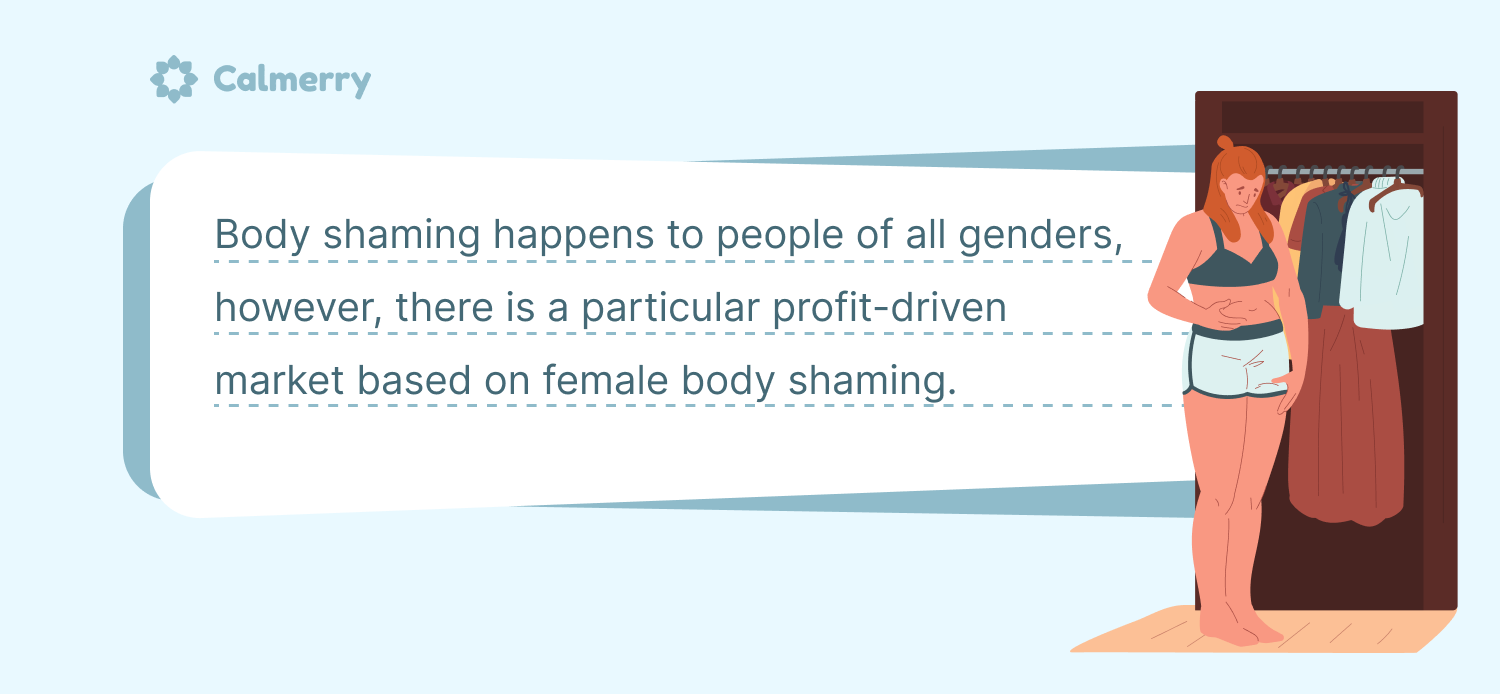
When you look at magazine covers in the grocery store – they’re typically covered with skinny model types with a tremendous amount of photoshopping. In addition, most movies, TV shows, and social media portray unrealistic images of what attractiveness looks like – thin, able-bodied, and wrinkle-free.
These messages support unattainable standards that promote body shame and prevent us from living happy and healthy lives. Body shaming happens to people of all genders, however, there is a particular profit-driven market based on female body shaming.
In her book, The Beauty Myth, Naomi Wolf writes: “Whatever is deeply, essentially female – the life in a woman’s expression, the feel of her flesh, the shape of her breasts, the transformations after childbirth of her skin – is being reclassified as ugly, and ugliness as disease.”
She goes on to write, “At least a third of a woman’s life is marked with aging; about a third of her body is made of fat. Both symbols are being transformed into operable condition – so that women will only feel healthy if we are two-thirds of the women we could be.
“How can an “ideal” be about women if it is defined as how much of a female sexual characteristic does not exist on the woman’s body, and how much of a female life does not show on her face?”
Body image develops at a young age
Our self-esteem, the way we see ourselves when we look in the mirror, and how we picture ourselves in our mind’s eye start to take shape when we’re young. Unfortunately, up to 50% of children as young as 6 years old experience body shame and feel overweight or unsatisfied with their bodies, while 25% have tried a diet by the age of 7.
Body dissatisfaction and body shaming continue into adolescence. Research among 14-18-year-olds shows that:
- Weight-based bullying is common
- 33% of girls and 25% of boys experience weight-based teasing from peers
- 60% of the heaviest students experience weight-based teasing
- 84% of students have observed other students thought of as overweight being called names and being bullied
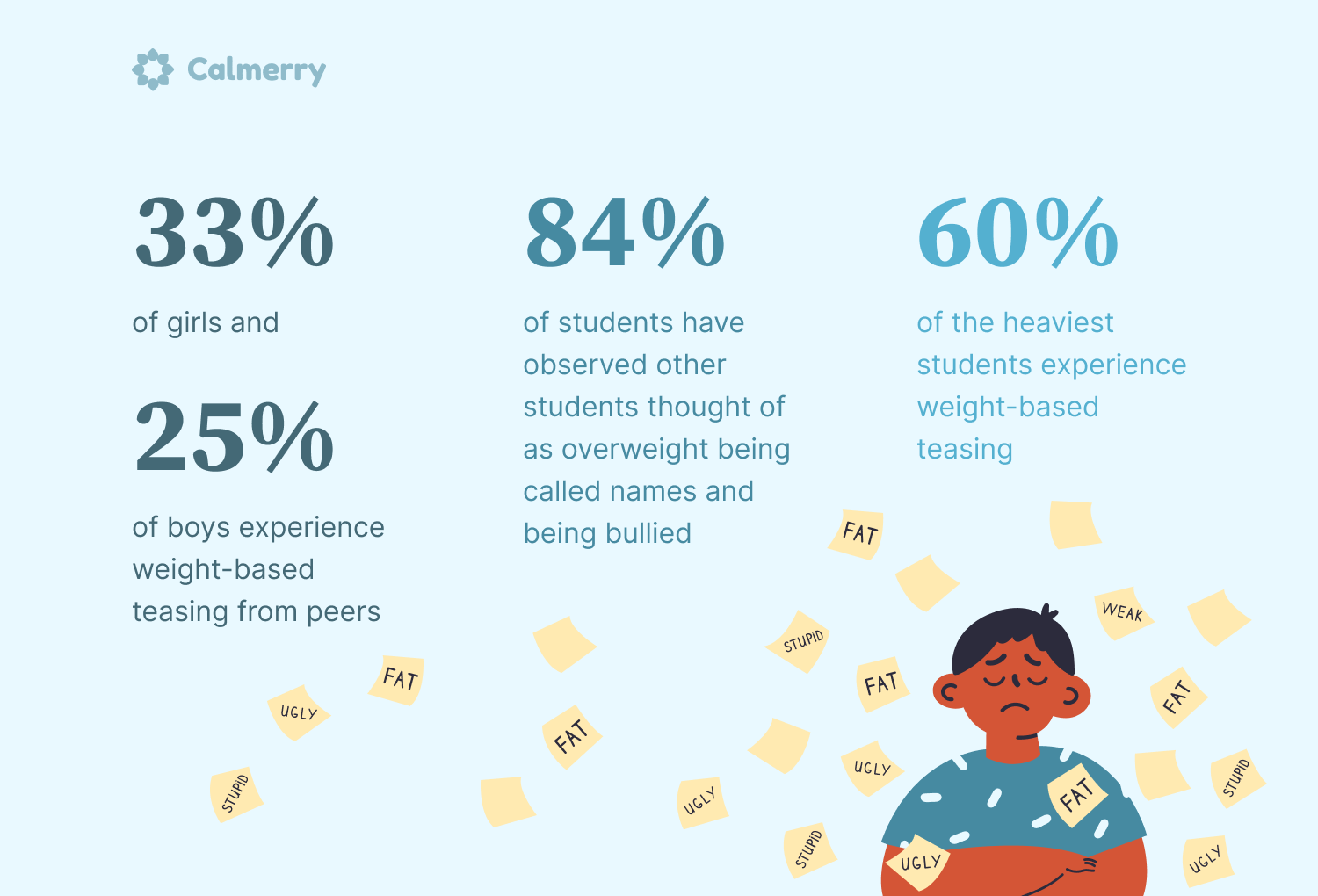
In addition, a 2020 survey of more than 25,000 Australian teens found that body image was a top concern in their lives even though friendships and family relationships were the most highly valued. A 2016 survey in the UK found that nearly half of girls aged 11-21 feel that the way they look holds them back in life.
Beauty standards have changed throughout history
In ancient China, King Ling of Chu preferred narrow waists to the point where multiple people in court starved themselves to death to try to fit his preferred appearance. Hundreds of years later, in the Tang dynasty, body ideals shifted to idolize full-figured women.
In Victorian England, women wore corsets to cinch their waists to 18 inches and force their bodies into the mold of the then-idealized hourglass shape.
It didn’t seem to matter that women’s health suffered from the tight lacing of corsets, or that women had fainting spells, heart palpitations, deformed ribs, and muscle atrophy. These waist-slimming corsets continued to be a cultural expectation for 60+ years.
For more than a century in the United States, the concept of “All American” beauty centered around whiteness. In fact, prior to 1940, being “of the white race” was a qualifier for entering the Miss America pageant.
In the 1960s, the Black is Beautiful movement embraced black culture and identity, while the fat acceptance movement worked to end fat-shaming and eliminate discrimination based on body size.
In the early 2010s, the body positive movement emerged to challenge unrealistic, fatphobic, racist, ableist, and discriminatory beauty standards. And in the 2020s, the idea of body neutrality, or removing the body as a determinant of self-worth and self-perception, has gained traction.
Beauty standards are linked to class
Beauty standards are often directly correlated with how much money a person has. Plastic surgery, facials, braces, skin care products, Botox, makeup, and anything else that alters a person’s appearance costs money.
In addition, people who fit societal norms of beauty make more money than the rest of the population. Conversely, fatphobia causes discrimination in hiring and leads to fewer promotions at work.
How body-shaming affects us
Realistically, most of us know on some level that a person’s worth is not based on their appearance. But that doesn’t always translate to our emotions, automatic thoughts, or experiences.
Body shaming can be distressing, make a person question their self-worth, and result in serious mental health issues, including:
- Low self-esteem
- Self-harm behaviors
- Body dysmorphia
- A higher risk of suicide
- Increased rates of depression and anxiety
- Overwhelming shame that significantly impacts regular activities
- Eating disorders
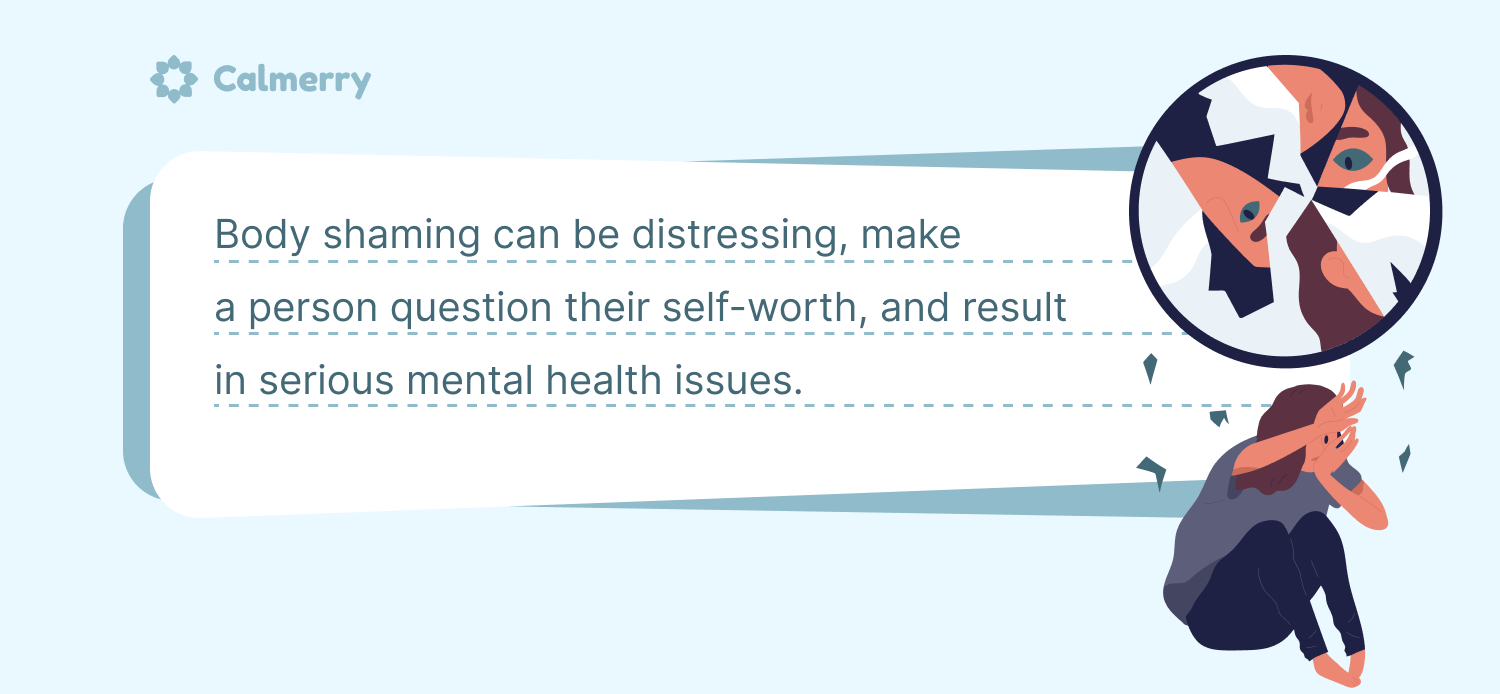
The link between body shaming and eating disorders
While body shaming is certainly not the sole cause of eating disorders, it definitely contributes to them. According to statistics, up to two-thirds of people with eating disorders report that bullying was a key contributor to their problem, leading to:
- An increase in binge eating episodes
- Overeating to cope with weight stigma
- Worsening of anorexia or bulimia symptoms
Discussing how body shaming fueled her eating disorder, singer Kesha explained, “It became a vicious cycle: When I compared myself to others, I would read more mean comments, which only fed my anxiety and depression.
“Seeing paparazzi photos of myself and the accompanying catty commentary fueled my eating disorder. The sick irony was that when I was at some of the lowest points in my life, I kept hearing how much better I looked. I knew I was destroying my body with my eating disorder, but the message I was getting was that I was doing great.”
And this is not to be taken lightly. Nearly one in ten Americans experience an eating disorder in their lifetime. Eating disorders are causing one death every 52 minutes and affect all races, ages, genders, and sexual identities.
How to deal with body shaming
The first step in managing body shaming is to be able to identify when it’s happening. How many times have you looked at yourself in a mirror and zoomed in on a perceived flaw, felt bad about the way your clothes were fitting, heard someone say they only date tall men, or joked about someone being bald?
All of these are examples of body shaming – it’s just so normal to us that we don’t even notice it when it happens.
Below are 4 things to keep in mind when thinking about how to respond to body shaming.
1. Know that there’s no such thing as a perfect body
Simply expecting someone to love their body, have high self-esteem, and be resilient in the face of discrimination and dominant beauty narratives can lead to even more shame.
That said, everyone deserves to have a positive self-image, regardless of pop culture norms or erroneous, inappropriate, and flat-out wrong value systems based on size, shape, race, gender, sexuality, or ability.
You may take a body-neutral stance, and even if you don’t love everything about the way you look, focus on the fact that your body or appearance determines no part of your value or worth.
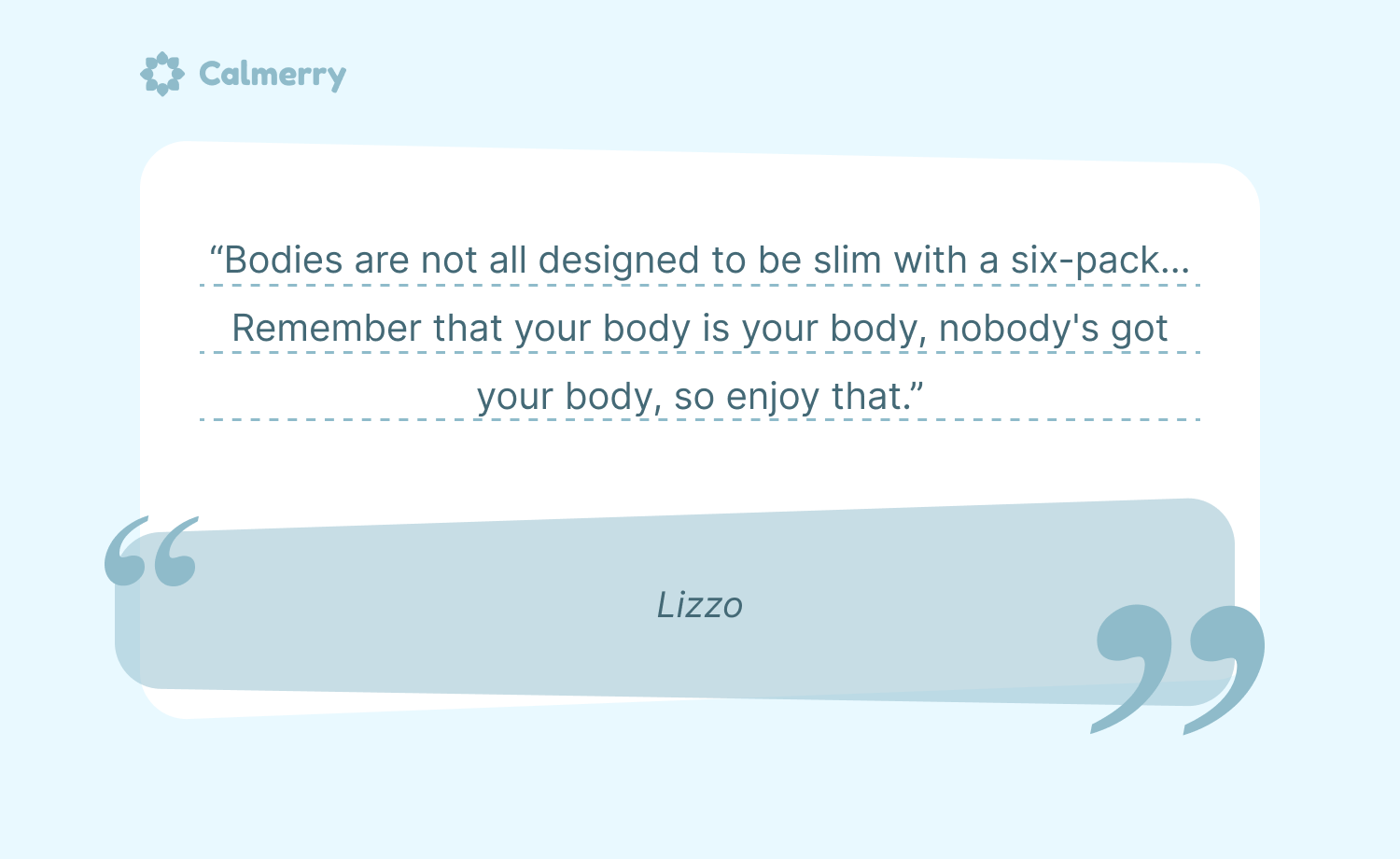
Try to respect your body and prioritize treating it well rather than aiming to look a certain way. That’s easier said than done, but it’s no less important.
If it works for you, follow Lizzo’s advice: “Bodies are not all designed to be slim with a six-pack… So, if you’re feeling down on yourself today, just remember that your body is your body, nobody’s got your body, so enjoy that.”
2. Fill your social media with people who make you feel good
Actress Jameela Jamil put it simply when she said, “I don’t want to worry about stretch marks or cellulite or time or gravity showing on my face and my body.
“These things are deliberately there – to go full ‘tin hat’ on you – they are here to distract us, to give us something else to think about so that we’re not thinking about growing our businesses and our families and our lives and our hearts and our minds.”
Unfollow people who make you feel bad and fill your feed with body positivity (or body normativity), and follow:
Following this 3-times Paralympic medalist and Dancing With the Stars contestant is like having your own personal life coach. Her feed is inspiring, uplifting, and very real.
Founded by Jameela Jamil, I Weigh is an inclusive space focused on breaking down stereotypes, eliminating body shame, and promoting self-esteem and wellness.
Author of Every Body Yoga and Yoke, Jessamyn Stanley offers wisdom, self-expression, yoga poses, an exploration of social issues, and most of all, compassion.
Author of Body Talk, Katie Sturino gives us #supersize the look, unabashed confidence, and real-life experiences of things like thigh chafing, and the dread of trying on jeans.
Including #CelluliteSaturday and beautiful photos with captions like, “LIFE ISN’T WAITING FOR YOU TO LOSE WEIGHT,” Kenzie Brenna describes her feed as “weight loss turned self-love.”
Author of Body Positive Power, Megan Jayne Crabbe’s feed is colorful and visually pleasing. More than that, it’s filled with body empowerment, positive affirmations, and informative, uplifting messages.
Life coach and author of Am I Ugly? and The Joy of Being Selfish, Michelle Elman focuses on inclusivity and offers wise tips for all aspects of your life. Having had multiple surgeries herself, she also promotes body love and acceptance with #scarrednotscared.
The National Eating Disorder Association’s Proud2Bme is an online community focusing on shifting the conversation around food, weight, and body image.
This brilliant nutritionist offers a “non-diet approach” to health and happiness. She debunks common diet tropes, answers burning questions about food and health, and generally makes you feel good about yourself.
Shay Neary is a transgender plus model who fills her feed with raw and real personal thoughts, experiences, and observations that will get your wheels turning.
Author of Ya Sama and 17 times Paralympic medalist, Tatyana McFadden writes, “In a wheelchair but who cares. Love yourself for who you are.”
IMG “Brawn” model Zach Miko offers meaningful content around size inclusivity, body acceptance, and unfiltered, everyday life.
Calmerry is always here for you, sharing tips on how to improve your emotional well-being along with helpful reminders that will make you feel better about yourself.
And you can also follow anyone else who makes you feel good.
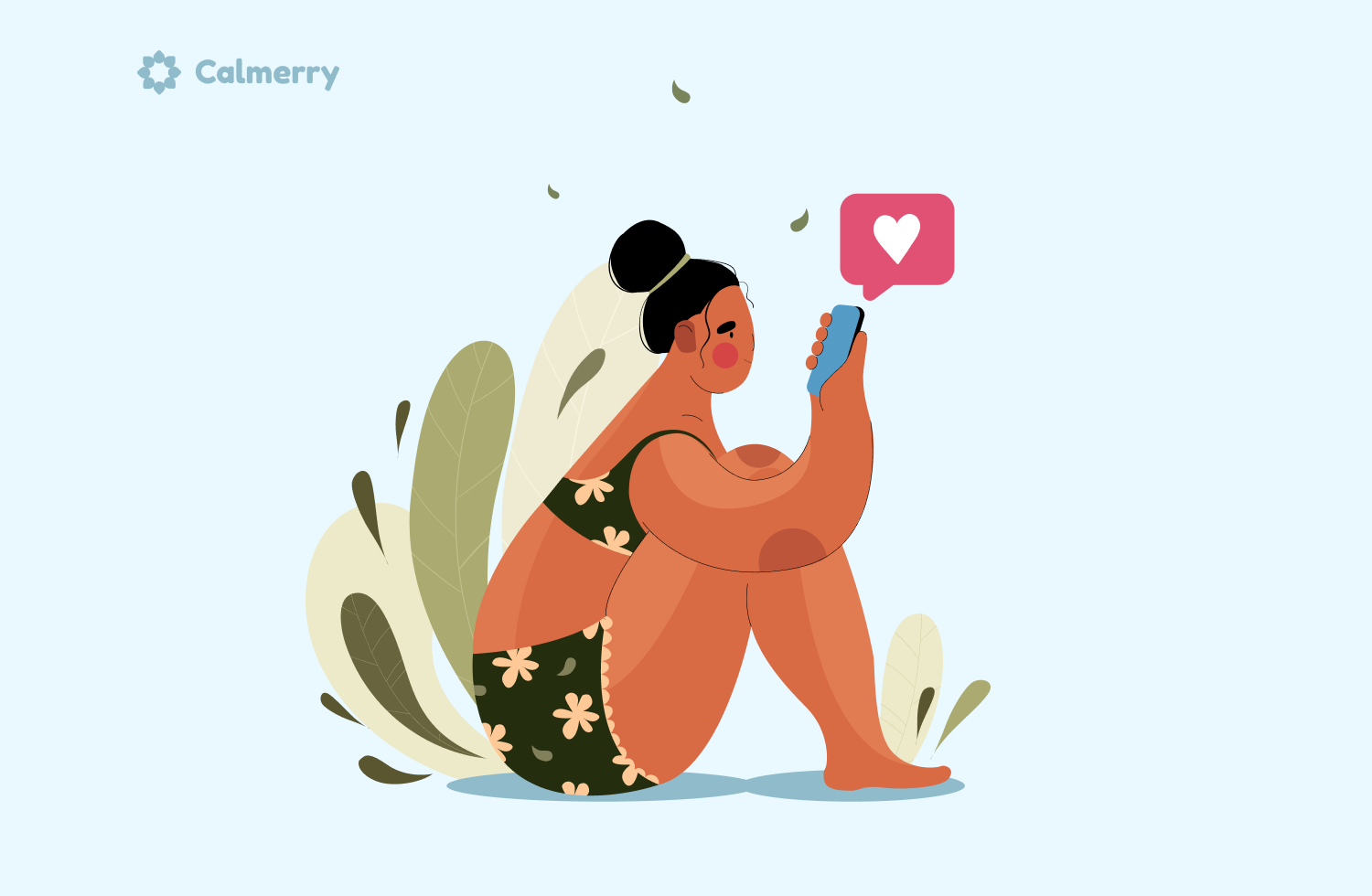
Filling your social media with body normativity can reinforce your own self-confidence and directly challenge false and limiting standards of beauty. It’s also a way to build community with like-minded people who are triumphantly overcoming damaging social messaging.
If it feels good to you, join in and post your own body-positive messaging, knowing that there’s nothing more powerful, compelling, or beautiful than embracing yourself and everyone else, as we all are.
3. Build a healthy relationship with food
In our diet-obsessed culture, it can be challenging to feel good about what you eat. As a new mom, you’re expected to “bounce back” to your previous body, and when summer is approaching, you’re supposed to be “bikini-ready.”
Women are talked about as “letting themselves go” if they gain weight or stop spending money on makeup and plastic surgery, while diet trends promise to help you lose more weight than is sanctioned by doctors as healthy.
As much as possible, move away from the restriction or “guilty pleasure” mentality and towards eating foods that are deliciously nourishing. You deserve to experience the joy of eating and fuel your body with things that can keep you going. If you choose healthy food, do it out of love for yourself, not for your appearance.
4. Talk about it with people you trust
Talk to your friends, your mom, your dad, your sisters, your brothers, yourself, and/or your (future) child about your experiences of body shame and body acceptance. Listen closely to their perceptions and experiences.
Everyone has a journey, even the people you’d least expect to have something to say on the topic. You’ll feel more connected when you are open about body shaming, and in turn, it will have less power over you.
It’s also important to talk openly with your online therapist, who can support you in exploring how body shaming specifically impacts your life. They’ll work with you to develop the skills you need to uproot your individual seeds of body shame, get out of the “if only” mindset, and move towards self-love, in the present, as you are.
Final thoughts
Fighting beauty standards and challenging stereotypes can be pretty difficult, so don’t forget that you’re not alone. No matter what you’re going through, you can always share your thoughts and emotions in a safe virtual therapy room.
Online therapy allows you to get help and support from virtually anywhere, and online sessions can fit even the busiest schedule. You can get connected with a licensed mental health professional from your state in 1 hour and make the first step toward a healthier life.
online therapy
live video session

